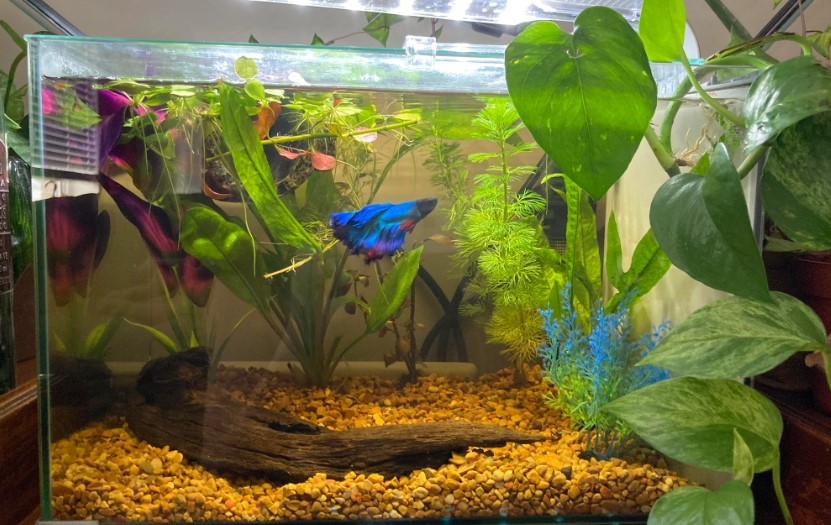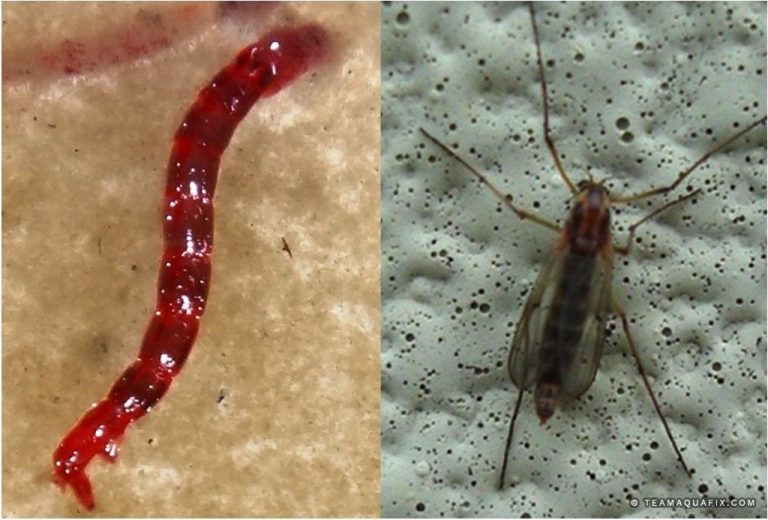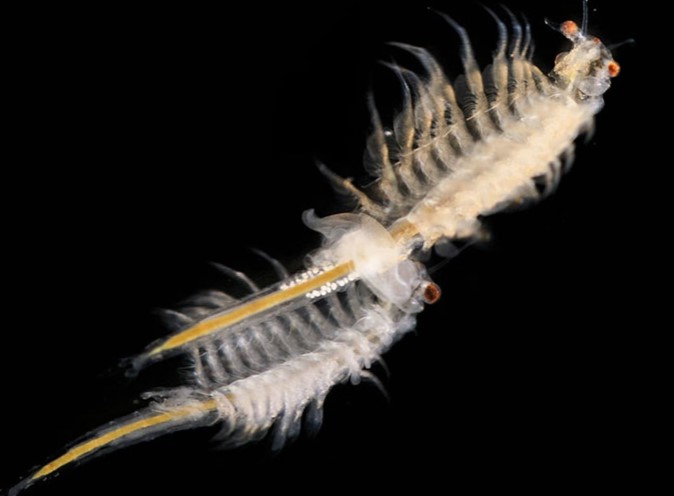The Ultimate Guide: Fish That Can Safely Live with Bettas in a 5 Gallon Tank
Bettas can live with only snails and shrimp in a 5-gallon tank. A 5-gallon tank is a great option for those who want to keep bettas as pets.
Adequate care and attention must be given to the fish, as well as their tankmates. Bettas are known to be aggressive towards other fish and can damage their fins and gills. Thus, it is essential to select appropriate tankmates that can peacefully coexist with bettas.
While snails and shrimp make excellent tankmates, other fish must be avoided or introduced in a larger tank. A 5-gallon tank is suitable for one betta and a few snails or shrimp, providing ample room to swim and hide. Careful consideration and research must be conducted to ensure that bettas thrive in their environment.

Credit: sevenports.com
Understanding The Compatibility Of Bettas With Other Fishes
Betta fish, also known as siamese fighting fish, are known for their colorful scales and long flowing fins. While they can be kept in small tanks, it’s important to note that not all fish get along well with bettas. Therefore, before adding any fish, it’s essential to understand the compatibility of bettas with other fishes.
Factors To Consider Before Adding Fish To Betta Tank
Here are some things that you need to keep in mind before adding any fish to your betta tank:
- Betta fish are territorial, which means they can be aggressive towards other fish or animals that share the same space.
- Bettas are tropical fish that require warm water between 74-82°f (23-28°c). Therefore, choosing fish that can survive in this temperature range is very important.
- The size of the tank is another essential factor. A 5-gallon fish tank is suitable for one betta fish and a few compatible tankmates. Adding too many fish or having a small tank can cause stress and aggression in bettas.
Fish Species To Avoid When Housing With Bettas
Here are some fish species that you should avoid keeping with bettas:
- Guppies: While guppies may seem like an attractive option, they have long and colorful fins that can provoke aggression in bettas.
- Tetras: Tetras are notoriously known for nipping and harassing bettas.
- Goldfish: Goldfish can carry diseases that bettas are vulnerable to, and they require much colder water temperatures.
- Angelfish: Angelfish are too large and aggressive to be housed with bettas.
- Barbs: Barbs are another aggressive fish species that can cause harm to bettas.
Choosing the right fish to put in your betta tank is crucial for the health and happiness of your fish. Keeping bettas with compatible tankmates can create a vibrant, thriving aquatic environment.
Top 5 Fish That Can Coexist Peacefully With Bettas In A 5 Gallon Tank
Bettas are known for their aggressive nature, which makes it difficult for them to coexist with other fish in the same tank. However, there are a few fish that can peacefully live with bettas in a 5-gallon tank. We’re going to talk about the top 5 fish that can coexist with bettas harmoniously.
Neon Tetras
Neon tetras are one of the most popular fish to keep with bettas. They are small, colorful and peaceful, making them the perfect companions for bettas. Here are a few key points to keep in mind:
- Neon tetras require a minimum of 5 gallons of water.
- They are schooling fish and need to be kept in groups of at least 6.
- Make sure that the water parameters are suitable for both neon tetras and bettas.
- Feed them with small pellets and flakes twice a day.
- Neon tetras are active swimmers, make sure that the 5-gallon tank is heavily planted.
Harlequin Rasboras
Harlequin rasboras are another fish that can coexist peacefully with bettas in a 5-gallon tank. They are colorful and active swimmers, which can add a beautiful layer to your tank. Here are a few key points to keep in mind:
- Harlequin rasboras require a minimum of 5 gallons of water.
- They are schooling fish and need to be kept in groups of at least 6.
- Make sure that the water parameters are suitable for both harlequin rasboras and bettas.
- Feed them with small pellets and flakes twice a day.
- Harlequin rasboras are active swimmers, make sure that the 5-gallon tank is heavily planted.
Pygmy Corydoras
Pygmy corydoras are tiny catfish that are perfect for a 5-gallon tank. They are peaceful, active swimmers and can add a unique touch to your tank. Here are a few key points to keep in mind:
- Pygmy corydoras require a minimum of 5 gallons of water.
- They are schooling fish and need to be kept in groups of at least 6.
- Make sure that the water parameters are suitable for both pygmy corydoras and bettas.
- Feed them with small pellets and flakes twice a day.
- Pygmy corydoras are scavengers, so you need to supplement their diet with sinking pellets.
African Dwarf Frogs
African dwarf frogs are not fish, but they can coexist with bettas in a 5-gallon tank. They are peaceful and don’t take up much space, which makes them the perfect companions for bettas. Here are a few key points to keep in mind:
- African dwarf frogs require a minimum of 5 gallons of water.
- They are social animals and do well in pairs.
- Make sure that the water parameters are suitable for both african dwarf frogs and bettas.
- Feed them with shrimp pellets, bloodworms, and other small food items.
Shrimp (Cherry Or Amano)
Shrimps are a great addition to any aquarium, and they can coexist with bettas in a 5-gallon tank. Cherry and amano shrimps are both great options. They are peaceful and can add a unique touch to your tank. Here are a few key points to keep in mind:
- Shrimps require a minimum of 5 gallons of water.
- They are hardy and can survive a wide range of water conditions.
- Make sure that the water parameters are suitable for both shrimps and bettas.
- Feed them with algae wafers, shrimp pellets, and other small food items.
Choosing the right companion for your betta can be challenging, but with the right knowledge, you can create a peaceful and beautiful aquarium. Remember, fish compatibility is essential, and you need to research before adding any new fish to your tank.
By following the guidelines mentioned above, you can coexist different fish species with bettas and enjoy a harmonious aquarium.
Characteristics Of Ideal Tankmates For Bettas
Characteristics Of Ideal Tankmates For Bettas:
Bettas are solitary fish, known for their aggressive behavior towards other fish. However, they can live peacefully with certain types of fish. When selecting tankmates, the following characteristics should be considered:
Size, Color, And Shape Of Fishes:
It’s crucial to choose tankmates that are relatively the same size as bettas as big fish may be seen as a threat by bettas. Additionally, avoid colorful fish and those with long streaming fins, which may trigger a betta’s aggression.
The following are the ideal characteristics of a betta tankmate:
- Small size: Fish that grow 1-2 inches in length.
- Dull or dark color: Fish with dull colors or less vibrant hues.
- Short fins: Fish that do not have flowing or elongated fins.
- Peaceful nature: Fish that are not aggressive and clash with bettas.
Temperament And Activity Level:
It’s critical to select tankmates with a peaceful nature as they can become stressed and overwhelmed when living with excessively active or territorial fish. Also, bettas need hiding places and spaces for rest, and active fish may scare or stress bettas.
Consider the following:
- Peaceful: Calm and not aggressive fish.
- Slow swimmers: Fish that swim slowly, are gentle, and don’t require a lot of space to move around.
- Hiding spaces: Bettas should have places to hide when feeling threatened.
Feeding Habits And Tank Requirements:
The ideal tankmates must require the same living conditions as bettas. Ensure that the tank size is appropriate, and the water temperature is adaptable to both species. Betta finnage can be damaged by fin nipping fish, which can lead to diseases.
Consider the following:
- Omnivores: Fish that eat both vegetable and meat-based food.
- Tank size: A 5-gallon tank should be sufficient to accommodate both.
- Water temperature: Ideally, maintain the water temperature between 75-80°f.
- Fin nippers: Fish that do not nip the betta’s fins.
How To Introduce New Fishes To Your Betta
Acclimation Process
When you bring new fish home, they need time to adjust to the water temperature and chemistry. The acclimation process of new fish should take at least 30 minutes. Here’s how to do it:
- Float the bag containing the fish in the tank for 15-20 minutes.
- Add some water from the tank into the bag.
- Wait for an additional 10-15 minutes.
- Repeat the process every 5 minutes until you have doubled the water in the bag.
- Finally, use a net to gently transfer the fish into the tank.
Quarantine Procedures
Before introducing any new fish to your betta, you should quarantine them for at least two weeks. This will help you avoid introducing any potential diseases to your betta fish. Here are some key points to remember when quarantining your fish:
- Use a separate tank for quarantining.
- Check the fish daily for signs of illness.
- Do not feed the fish for the first few days until they settle down.
- Test the water regularly and do water changes if necessary.
Monitoring Fish Behavior And Tank Conditions
After introducing new fish to your betta, it’s important to keep an eye on their behavior and the tank conditions. Here’s how to ensure that your fish are doing well:
- Observe the fish regularly for signs of aggression or stress.
- Test the water chemistry using a reliable test kit to ensure the environment is healthy.
- Avoid overfeeding the fish, as it can cause water quality problems.
- Keep the tank clean by doing regular water changes and cleaning the filter.
By following these steps for introducing and acclimating new fish to your betta tank, you can ensure that all the inhabitants will coexist peacefully, healthily, and happily.
Tips For Maintaining A Healthy And Balanced Community Tank
Fishkeeping is a rewarding hobby that requires patience, dedication, and careful planning. Bettas are beautiful and fascinating fish, but they can be quite aggressive towards other fish, so it’s essential to choose suitable tankmates for them. In a 5-gallon tank, the options are limited, but you can still create a healthy and balanced community tank with the right species.
Here are some tips for maintaining optimal water parameters, setting a regular feeding and water change schedule, and identifying and treating common tank diseases.
Maintaining Optimal Water Parameters
Maintaining optimal water parameters is crucial for the health and well-being of your fish. For a 5-gallon betta tank, the ideal parameters are:
- Temperature: 76-82°f (24-28°c)
- Ph: 6.5-7.5
- Ammonia: 0 ppm
- Nitrite: 0 ppm
- Nitrate: Less than 20 ppm
To achieve and maintain these parameters, you need to:
- Use a reliable thermometer and a heater to regulate the temperature.
- Test the water regularly with a test kit to monitor ammonia, nitrite, and nitrate levels.
- Perform partial water changes of 20-30% weekly to dilute toxins and replenish essential minerals and trace elements.
- Use a water conditioner to remove chlorine and chloramine from tap water and neutralize heavy metals.
Regular Feeding And Water Change Schedule
Feeding your fish a balanced and varied diet is essential for their growth, health, and coloration. Bettas are carnivores and require protein-rich foods like pellets, flakes, or frozen/live brine shrimp, bloodworms, or daphnia. In a community tank, you need to ensure that the other fish get their fair share of food, but you also need to avoid overfeeding and polluting the water.
A good rule of thumb is to feed your fish twice a day with an amount that they can consume in 2-3 minutes.
Maintaining a regular water change schedule is critical for removing excess food, waste, and toxins from the aquarium and ensuring a healthy and balanced ecosystem. In a 5-gallon tank, you should perform a partial water change of 20-30% weekly, or more often if necessary, due to overcrowding, overfeeding, or disease.
Identifying And Treating Common Tank Diseases
Fish can be susceptible to various diseases and infections, especially if the water quality or the tank conditions are suboptimal. Some common tank diseases that can affect bettas and their tankmates are:
- Ich (white spot disease): A parasitic infection that causes white spots on the body, fins, and gills of fish.
- Fin rot: A bacterial infection that causes frayed or torn fins and tail.
- Velvet: A parasitic infection that causes a golden or rust-colored dust on the skin and fins.
- Dropsy: A bacterial infection that causes a bloated and pinecone-like appearance.
To prevent or treat these diseases, you need to:
- Quarantine new fish before adding them to the community tank to avoid introducing pathogens or parasites.
- Monitor your fish for signs of stress, aggression, or illness.
- Adjust the temperature, ph, and salinity of the water if necessary.
- Use appropriate medications or treatments as recommended by a qualified veterinarian or fish expert.
Creating a healthy and balanced community tank with bettas in a 5-gallon tank requires attention to detail, patience, and knowledge. By maintaining optimal water parameters, setting a regular feeding and water change schedule, and identifying and treating common tank diseases, you can provide a safe and thriving environment for your fish and enjoy the beauty and serenity of your aquarium.
Frequently Asked Questions On What Fish Can Live With Bettas In A 5 Gallon Tank
Can Guppies Live With Bettas In A 5 Gallon Tank?
Yes, but only if they are the same size or smaller than the betta.
Do Betta Fish Get Along With Snails?
Yes, snails are peaceful and can help keep the tank clean.
Which Fish Should I Avoid In A 5 Gallon Tank With Bettas?
Avoid aggressive fish such as cichlids and goldfish, also avoid fin nippers.
How Many Fish Can You Put In A 5 Gallon Tank With A Betta?
Only one betta and a few small tank mates, such as shrimp or snails.
Conclusion
As you can see, selecting the right tank mates for your betta fish is crucial for their well-being. In a 5-gallon tank, there are several species of fish that can coexist with your betta without any issues. Always remember to check for compatibility before adding new tank mates.
Also, consider factors such as water parameters, feeding habits, and aggression levels when selecting fish. A well-planned aquarium with suitable tank mates can create a beautiful and harmonious underwater ecosystem for your betta. In addition to providing visual appeal, this can also help to reduce stress for your fish and keep them happy and healthy.
So, take the time to do your research and choose the best companions for your betta fish. A little planning and effort can go a long way in ensuring a thriving aquarium for your beloved pets.






